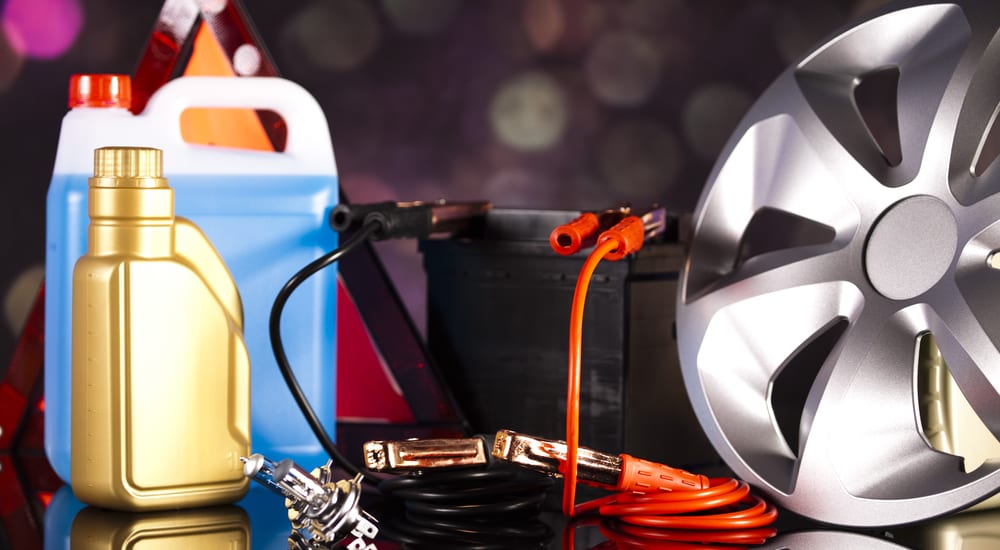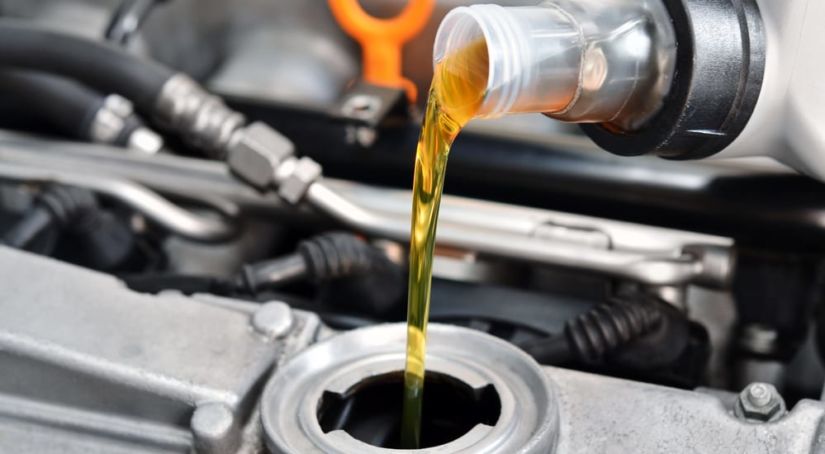Winter is nearly upon us, a time of bone-chilling temperatures, road salt, and slippery conditions. All of which can be very damaging for your car, not to mention dangerous in the wrong situation! If you’re lucky enough to live in a place that winter hasn’t quite struck, you may have a bit of time to make your winterization preparations. If you’re like me, winter is already making itself known in New Hampshire, where I live, with freezing temps and unexpected flurries. Those of us in New England need to get a move on to be sure we are adequately prepared for this dangerous season.
Here are 10 steps you should really take if you want to properly winterize your car, from getting a quick oil change to emergency supplies.
Get a (proper) oil change
A quick rule of thumb is that you should have your oil changed every 3 months or 3,000 miles driven. Most of us keep up with some sort of schedule to keep our cars and trucks humming along, but you may need to veer off your scheduled maintenance if you haven’t already gotten an oil change in preparation for winter. Did you know that the viscosity of your engine oil is an essential factor in its effectiveness? In order to run correctly, your engine needs lubrication of the right viscosity. As the temperatures plunge, your oil naturally becomes more viscous and thicker. This means that your engine may have trouble circulating the oil. If your engine isn’t getting enough lubrication, your vehicle may very well refuse to start when you leave your house on a cold winter morning.
The answer to this problem is a simple one, get a proper oil change. Places like your local auto dealer make it easy to stop in at your own leisure for an oil change with their no-appointment-needed, drive-up oil changes. They’ll be able to get your car or truck sorted out with oil engineered to suit your vehicle’s needs in winter. Drive-up appointments mean that you can easily stop in for a last-minute oil change. So if you’re only just realizing now that your vehicle isn’t prepared, don’t worry, it’s not too late to drop in!
Check your battery
The hallmark of winter weather is the freezing temperatures. Even the shortest cold-spell can spell disaster for your car’s battery. The temperatures plunge, the chemical reactions which generate power in your vehicle’s battery get sluggish. The colder the weather, the slower those chemical reactions will be. To put it into perspective, when it reaches 5 degrees Fahrenheit outside, a fully charged lead-acid battery only has half of its rated amp-hour capacity. It will also require a stronger current from your car’s battery to even get the engine started on a very cold day. This puts a lot of stress on your battery, and you may be left in the cold with a dead vehicle.
Before this sorry situation happens to you, get your car or truck’s battery tested by a mechanic. They can run a load test to see if the battery is still functioning properly. They will also be able to see if any corrosion is threatening your battery and can recommend a fix or replacement battery for you. If you’re too lazy to take this precaution, make sure your jumper cables are in your trunk the next time you hit the road!
Prepare for poor visibility
Snow, ice, and salt all make windshield visibility poor. And, it goes without saying, you really need to be able to see out of your windshield if you want to drive safely. Your best defense against a build-up of these winter threats while you’re driving is to ensure you have powerful windshield wiper blades and plenty of winter wiper fluid. If your location is prone to Nor-Easters or other extreme winter weather patterns, it may be worth investing in some wiper blades specifically designed for winter storms. These will have enough oomph to fight even the heaviest sleet or toughest frost. Keeping a spare gallon of wiper fluid with a low freezing temp in your trunk isn’t a bad idea either. You never know when you might need it. So, top off your wiper fluid with a trusted brand, install new wiper blades at least once a year, and you’ll be all set to maintain visibility to the road even in tough winter weather.
Get yourself some snow tires
For many people, buying expensive snow tires seems like overkill. If you live in a rural location, somewhere prone to heavy snowfall, or just simply drive a lot, snow tires can save your life. As a New Hampshire resident living up a steep, winding road, snow tires are a must even for my AWD car. All-season tires can be used in the winter, but snow tires are specifically engineered to remain flexible even when other materials would crack and get hard in the cold. Snow tires also have deeper tread patterns which are made specifically to be driven on snow and ice. This helps you retain traction when going around bends, hitting that invisible patch of black ice, or suddenly needing to brake when the guy in front of you decides not to indicate they’re turning left.
If snow tires seem to be overkill to you, you still need to make sure that your all-season tires stay properly inflated when the temperature drops. Air pressure drops when the weather gets cold, so make sure that you fill up your tires when it starts to feel less like fall and more like winter. If not, you risk your tires being unsafe due to a lack of traction on snowy or icy roads.
Stock up on emergency gear

Even if you think you’ve planned for every eventuality, it’s probably impossible to completely winterize your car. Mother Nature sometimes throws us a curve-ball, and all we can do is make the most of it. For those times which we just couldn’t have prepared for, having an emergency kit in the back of your car can mean all the difference. Here’s a list of some items to have ready in your car during the winter:
- An ice scraper with a brush attachment
- A flashlight with plenty of batteries
- Warm clothes like gloves, a hat, and a scarf
- A portable snow shovel
- Jumper cables
- A bag of kitty litter or sand for when your tires get stuck
- Extra windshield wiper fluid
- A warm blanket
Properly winterizing your car just takes a little pre-planning. Drop-in appointments can make winterizing your car by getting your oil changed even easier. Make sure to think about your engine’s needs as well as how winter precipitation is likely to impact visibility. For your comfort, you can even add a heated steering wheel cover or seat warmer if your car doesn’t already come equipped. Driving in the winter doesn’t have to be uncomfortable. If you follow these steps, you’ll be prepared to deal with whatever winter throws at you!



